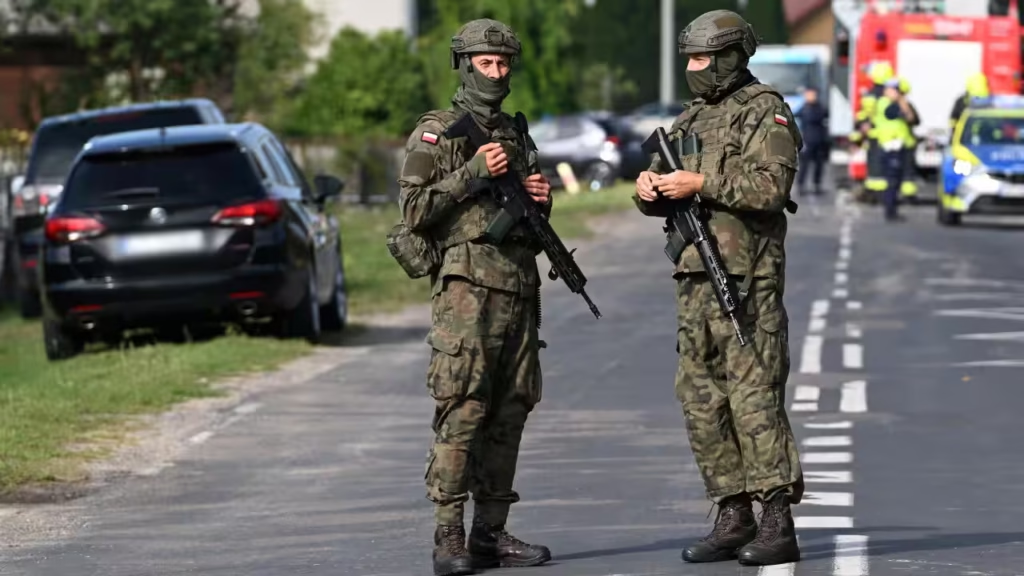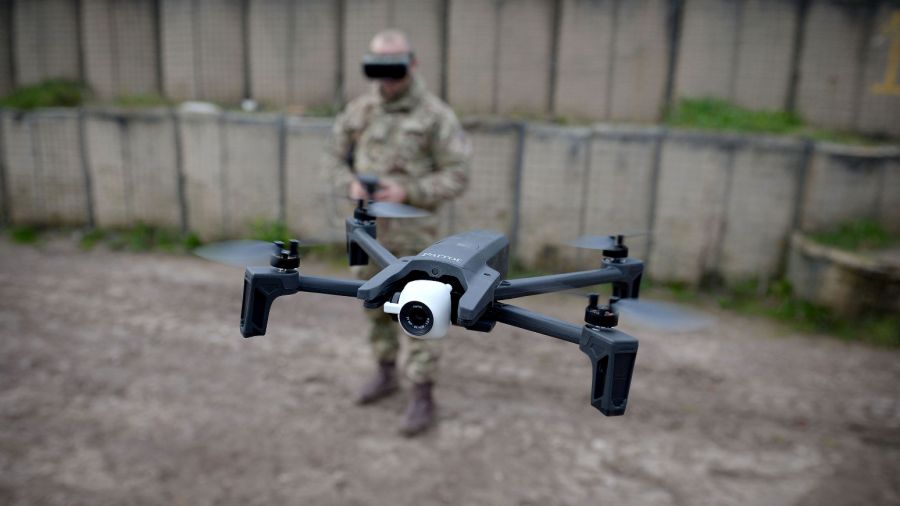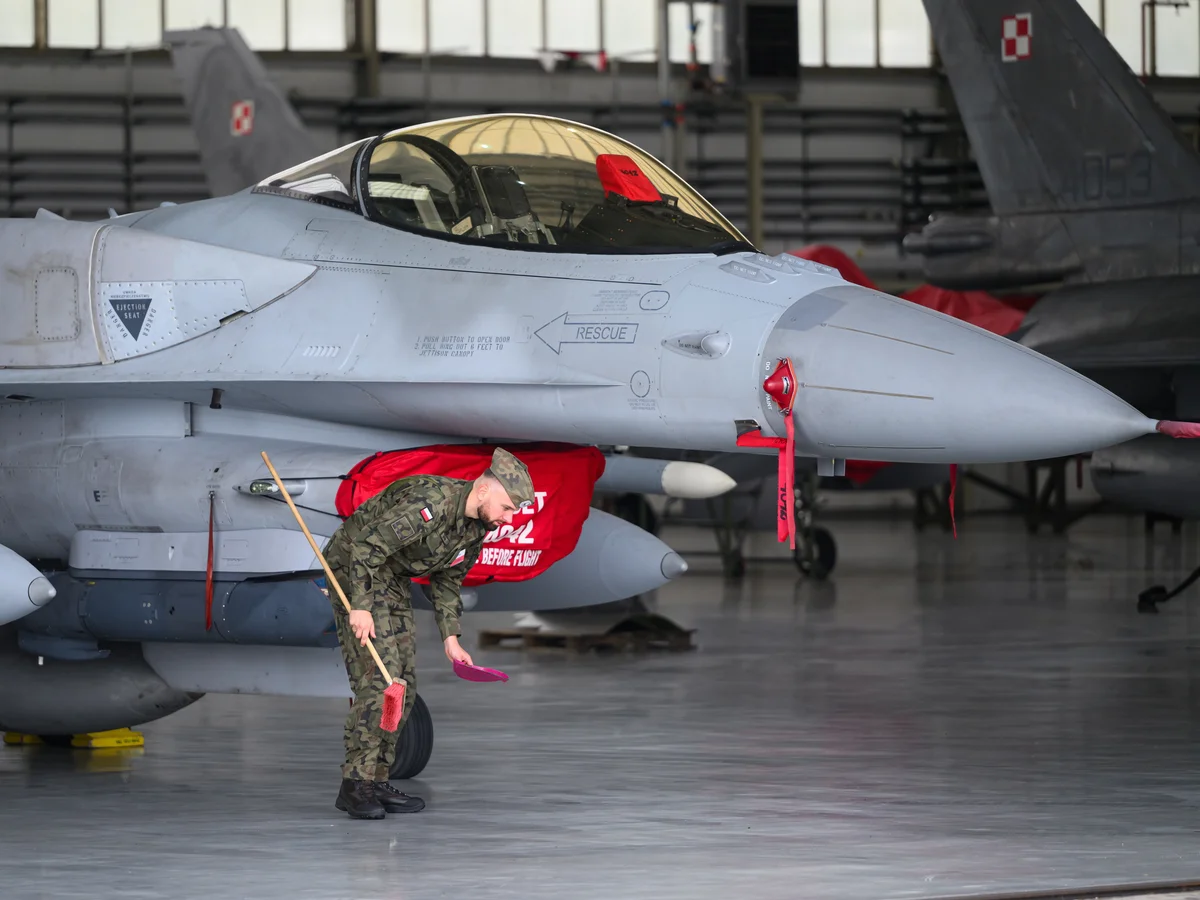Meta Description: Russia launches a massive drone and missile attack on Ukraine, prompting Poland to scramble jets and NATO to heighten air defense. Ukraine reports civilian casualties and infrastructure damage.
Russia Escalates Assault on Ukraine
In a dramatic escalation of hostilities, Russia launched a massive aerial assault on Ukraine early Saturday, targeting key regions, including areas near Ukraine’s western border with Poland. The attacks involved hundreds of drones and missiles, prompting Poland to scramble fighter jets alongside allied NATO aircraft to safeguard its airspace.
Kyiv’s Air Force confirmed that Russia deployed 579 attack drones and various dummy drones, accompanied by eight ballistic missiles and 32 cruise missiles, in what Ukrainian President Volodymyr Zelensky described as a “deliberate strategy to terrorize civilians and destroy infrastructure.”
“Every such strike is not a military necessity but a deliberate strategy by Russia,” Zelensky said, emphasizing the urgent need for international response. Civilian casualties are rising, with eight reported dead and at least 32 injured in attacks over the last 24 hours.
Poland and NATO on High Alert

The Polish military issued a statement on social media platform X, confirming that due to Russian long-range aviation activity, “Polish and allied aviation has begun operating in our airspace.” The statement added that duty fighter pairs had been scrambled and that ground-based air defense systems, along with radiolocation reconnaissance, were at maximum readiness.
This response comes amid broader NATO vigilance after Russian airspace violations in Eastern Europe, particularly in Estonia.
NATO Intercepts Russian Jets Over Estonia
On Friday, NATO intercepted three Russian MiG-31 fighter jets that violated Estonian airspace, described by Estonia as an “unprecedentedly brazen” act. The jets entered over the Gulf of Finland and remained in Estonian airspace for 12 minutes without permission, with transponders switched off and no flight plans filed, creating significant risks for other aircraft.
Italian F-35 fighters stationed in Estonia as part of NATO’s Eastern Sentry operation, along with Swedish and Finnish aircraft, responded to the intrusion. Russia, however, denied any breach, insisting the flight was conducted “in strict accordance with international rules.”
Estonia has invoked NATO Article 4 consultations, which allows member states to formally raise security concerns to the alliance’s decision-making body. A meeting is expected early next week.
Recent Drone Violations in Eastern Europe

This is not the first time Russian drones have triggered NATO responses. Earlier this month, Russian drones violated Polish and Romanian airspace, prompting NATO allies to strengthen defenses on the eastern flank. During one incident, NATO fighter jets shot down multiple Russian drones in Polish airspace, marking the first shots fired by the alliance since Russia’s full-scale invasion of Ukraine in February 2022.
The alliance denounced Moscow’s actions as “absolutely dangerous,” highlighting the growing tension along Europe’s eastern borders.
Humanitarian Impact in Ukraine
The attacks have taken a serious toll on Ukrainian civilians and infrastructure. Kyiv reported that three civilians were killed overnight, with dozens more injured. President Zelensky characterized the attacks as “terrorizing civilians and destroying infrastructure”, underscoring the urgent need for international support.
| Impact | Number of Incidents / Casualties |
|---|---|
| Drone strikes | 579 attack drones + dummy drones |
| Ballistic missiles | 8 |
| Cruise missiles | 32 |
| Civilian deaths (last 24 hours) | 8 |
| Injuries | 32+ |
| NATO engagement | Fighter jets scrambled in Poland & Estonia |
This table highlights the scale and human cost of Russia’s recent attacks, demonstrating the immediate need for defensive coordination among NATO allies.
Diplomatic Efforts Amid Rising Tensions
The attacks come as peace talks remain stagnant, with Ukraine’s allies focusing on securing long-term security guarantees for Kyiv. President Zelensky is scheduled to meet US President Donald Trump at the UN General Assembly in New York next week to discuss security assurances and ongoing diplomatic efforts.
Attempts by Trump to organize a joint summit between Zelensky and Russian leader Vladimir Putin have not yet materialized, leaving the path to a comprehensive ceasefire unclear.
Comparison of NATO Responses to Russian Air Incursions
| Country | Type of Russian Incursion | NATO Response |
|---|---|---|
| Poland | Drone violation over airspace | Fighter jets scrambled; drones shot down |
| Estonia | MiG-31 airspace violation | F-35, Swedish, and Finnish jets intercepted |
| Romania | Drone violation | Air defenses on alert; monitoring flights |
This comparison illustrates how NATO countries are coordinating defensive measures along the eastern flank to counter escalating Russian aerial threats.
Conclusion
The recent massive aerial assault by Russia on Ukraine underscores the fragile security situation in Eastern Europe. With Poland scrambling jets, NATO intercepting Russian fighters over Estonia, and civilian casualties rising in Ukraine, the crisis continues to escalate. The international community faces mounting pressure to respond decisively, balancing military preparedness with ongoing diplomatic efforts.
The attacks also highlight the evolving nature of modern warfare, where drone swarms and missile strikes are increasingly used to target civilian areas, raising concerns about international security and humanitarian impact.
For Europe and NATO, the challenge is twofold: protecting member states from aerial threats while supporting Ukraine’s fight against aggression, all amid a complex and fragile geopolitical landscape.



